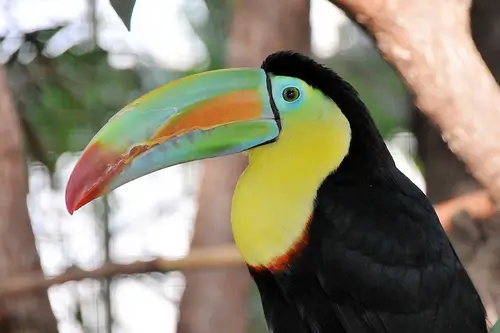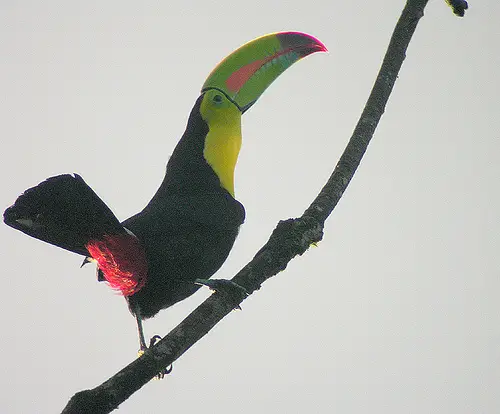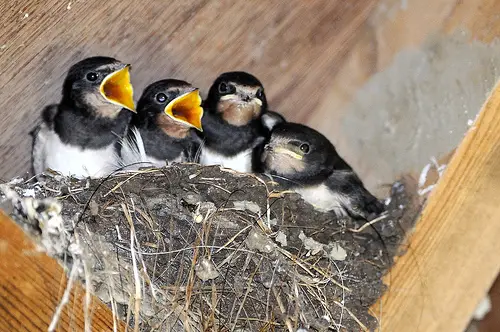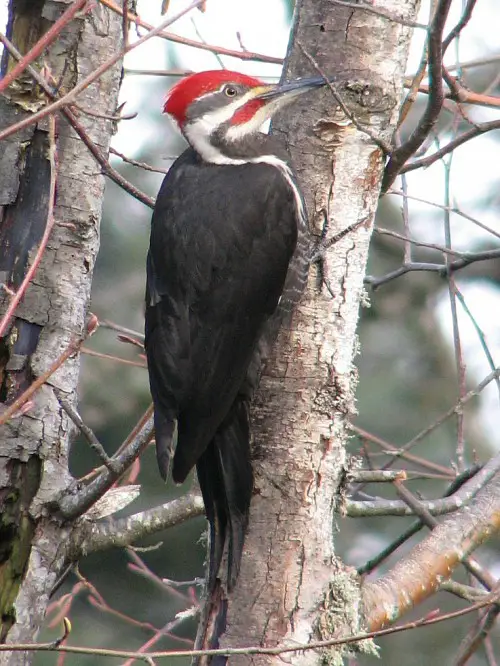Keel-billed Toucan
The Keel-billed Toucan (Ramphastos sulfuratus) is also known as Sulfur-breasted Toucan and is belong to a colorful Latin American member of the toucan family. They can be found mainly in Southern Mexico to Venezuela and Colombia. The Keel-billed Toucan range between 42 – 55cm long, including its famous long beak. Their large and colourful beak is around 12 – 15cm, which is actually a third of its total length. While the beak seems rather large and combersome, it is actually a spongy and hollow bone that is covered in keratin. As a result, it is very light.
Molting once a year, the Keel-billed toucan’s feathers are black, and have a yellow chest and neck. It also has red feathers at the tip of its tail and blue feet. Its beak is mainly green, however it does have a red tip and orange sides. Keel-billed toucans have toes that face in different directions. Their 2 toes are facing forwards, and they also have two facing backwards. This enables them to stay on branches and keep balance while hopping from one tree branch to another.
Like most other toucans, the Keel-billed toucan is a social bird and is rarely seen alone. It moves in small flocks of about 6 – 30 birds through lowland rainforests. However, it is a poor flyer and thus needs to hop from branch to branch.
Their flock has a family structure within them. These birds may fight with one another and do this by using their beaks and throw fruit into each other’s moths. They live together in groups and even share congested living quarters in the form of holes in trees. They are also able to use human-altered habitats to some extent and as a result is labeled by the IUCN as a species of least concern (ie they are abundant). Funnily enough, a Keel-billed toucan is apparently rather annoyed at being stared at by tourists at the Roatan Butterfly Garden in Roatan, Honduras. Perhaps it misses its feathered friends who may still be in the wild.
Keel-billed toucans usuallyeat fruits. However, they also eat small birds, insects, small reptiles, and eggs. Yes, indeed their handy beak does allow them to eat a number of fruits that other birds may not be able to eat, as it actually uses its beak to cut and disect the fruit before eating it. It then moves its head back and forth in order to swallow the entire fruit.
Female keel-billed toucans will lay a clutch of white eggs in a tree cavity. Both males and females take turns to incubate the eggs. There usually are 2 to 4 eggs, and they hatch between 15 to 20 days after they are laid. The chicks have no feathers and their eyes are closed for about 3 weeks. Fortunately, the chicks do have heel pads which protect them from the bottom of the nest. Until their beaks are fully developed and are ready to fly away from their home nest, the chicks stay in their nest for at least eight to nine weeks.




